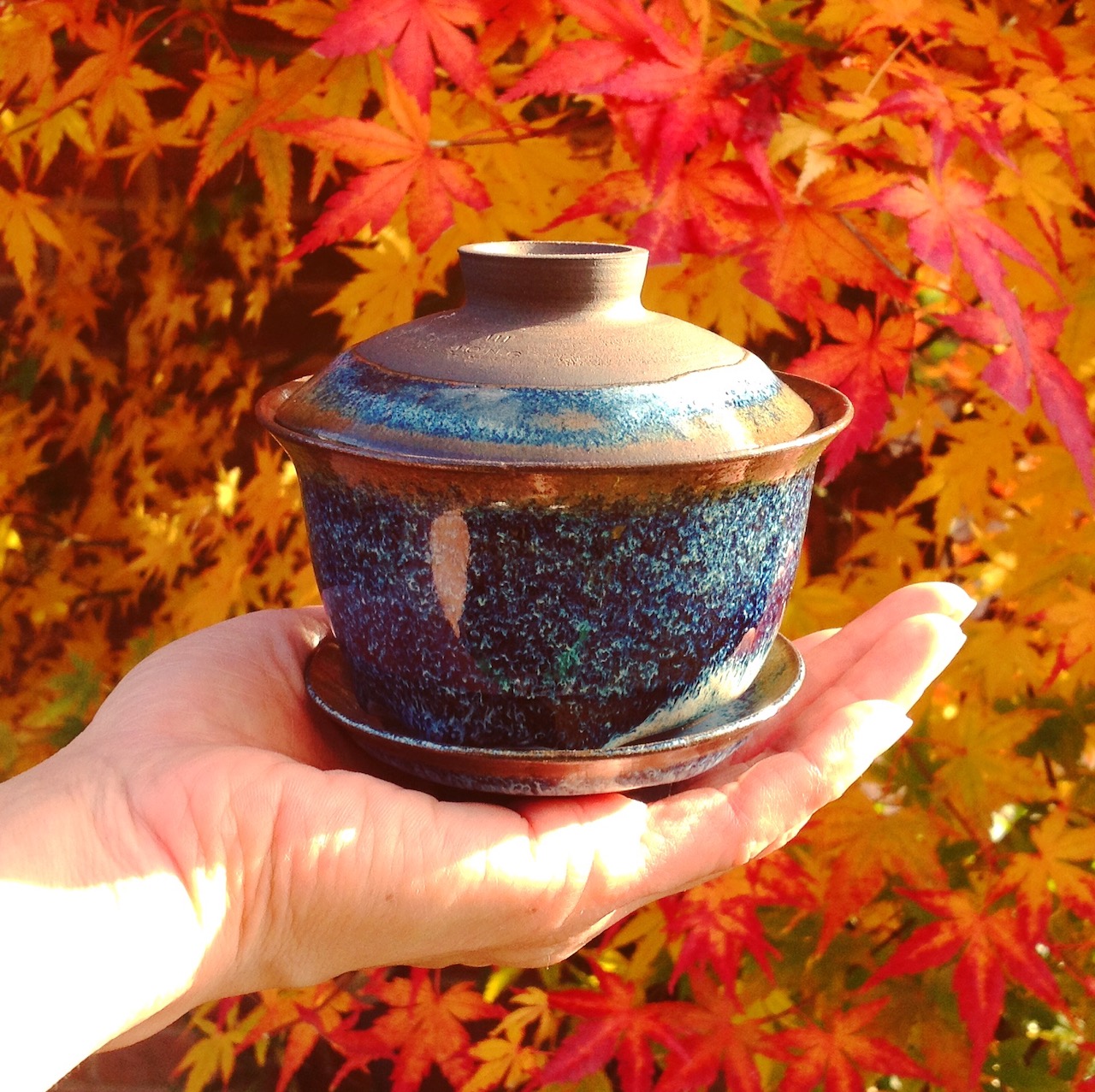Hot Water
It is recommended highly that you let boiling water settle (stop rolling/bubbling) before pouring it into a porcelain or stoneware item – especially a hand made piece. If the item is cold to the touch, perhaps try pre-heating it with warm/hot tap water. Pouring boiling water directly into a cold porcelain or stoneware cup, bowl or mug may cause the item / glaze to crack (thermal shock).
When brewing tea, ideally it is preferable to heat water to certain temperatures to ensure the tea releases their distinctive aroma and flavour compounds and to not dissolve the tannins and other desirable compounds in tea. Using water that is too hot may also create a bitter and unbalanced brew.
Guideline temperatures for tea:
White tea varieties: 65 – 80 ºC
Green tea varieties: 70 – 85 ºC
Yellow tea varieties: 70 – 85 ºC
Oolong tea: 75 – 90 ºC
Black tea: 85 – 100 ºC
Pu-er tea: 85 – 100ºC
Herbal tea varieties: 85 – 100ºC
If you are unable to wait for boiling water to cool, use another container to put the hot water in with a mixture of cold water, and then at the desired temperatures pour it onto the tealeaves.
Porcelain & Stoneware Care: Washing
Hand wash using a gentle dish soap. However Jong Ceramic pieces can be placed in the dishwasher for the removal of stubborn stains on a mild / low heat setting. Be careful with using dishwashers – in general they have a tendency to be extremely harsh on handmade ceramics – water temperature, corrosive detergents and vibration (among other things) make this extremely treacherous territory.
Unglazed porcelain and stoneware surfaces, are sometimes susceptible to light stains, unlike glazed porcelain and stoneware. Frequent washing can help remove and prevent staining. Perhaps try hand washing, You can also place the item in a bowl of warm water with a detergent tab. Very stubborn stains and spots can sometimes be removed with diluted chlorine and lime remover.
Dark lines in the glaze (usually caused by silverware) can be removed with vienna lime chalk powder or by scrubbing with a sponge with dish soap and baking soda. Grease stains on matte glaze can be removed with baking soda and water.
If greasy fingerprints appear, rub the exposed porcelain or stoneware with food safe oils, let sit, then clean with soap and water.
Porcelain & Stoneware Care: Microwave
IMPORTANT: Never microwave a Jong Ceramics ceramic piece due to the iron content in the clay.
Drinking
Be mindful drinking hot liquids from Jong Ceramics ceramic vessels. Due to the finely thrown nature of our ceramics and the thermal qualities of the clays we utilise, our vessels can become quite hot. If your vessel is too hot to handle, do not handle it. If it is too hot for your hands, it is too hot for your tongue – instead take a moment and imagine how nice that drink will taste once it has cooled down and is safe to drink.
Cup / Mug Sizing
Due to the nature of our handcrafted cups / mugs, the sizing and shapes will vary between pieces and also between collections and releases. We try to give as much information as we can in the product listings for our ceramic pieces so you can make an informed decision and find the piece that suits you.
The Ageing Of Your Pieces
Like all things in this world your pieces will age with use. How they age will reflect how they have been used and cared for. Acidic liquids are the harshest on glazes and strong coloured liquids may stain certain surfaces.
Your ceramics will grow with you and begin to tell their own stories.
Broken pieces
If your ceramics become chipped or cracked or damaged, then it is time to let them retire from functional use. You can put broken pieces on the shelve for aesthetic admiration or reuse broken pieces such as as plant holders.
Alternatively, you can try repairing the piece via Kintsugi yourself. Jong Ceramics also offer a Kintsugi service at a cost and the length of time to complete depends on the breakage amount.
If you have any more questions regarding the usage or caring or repair of our ceramic vessels, please don’t hesitate to contact us.

